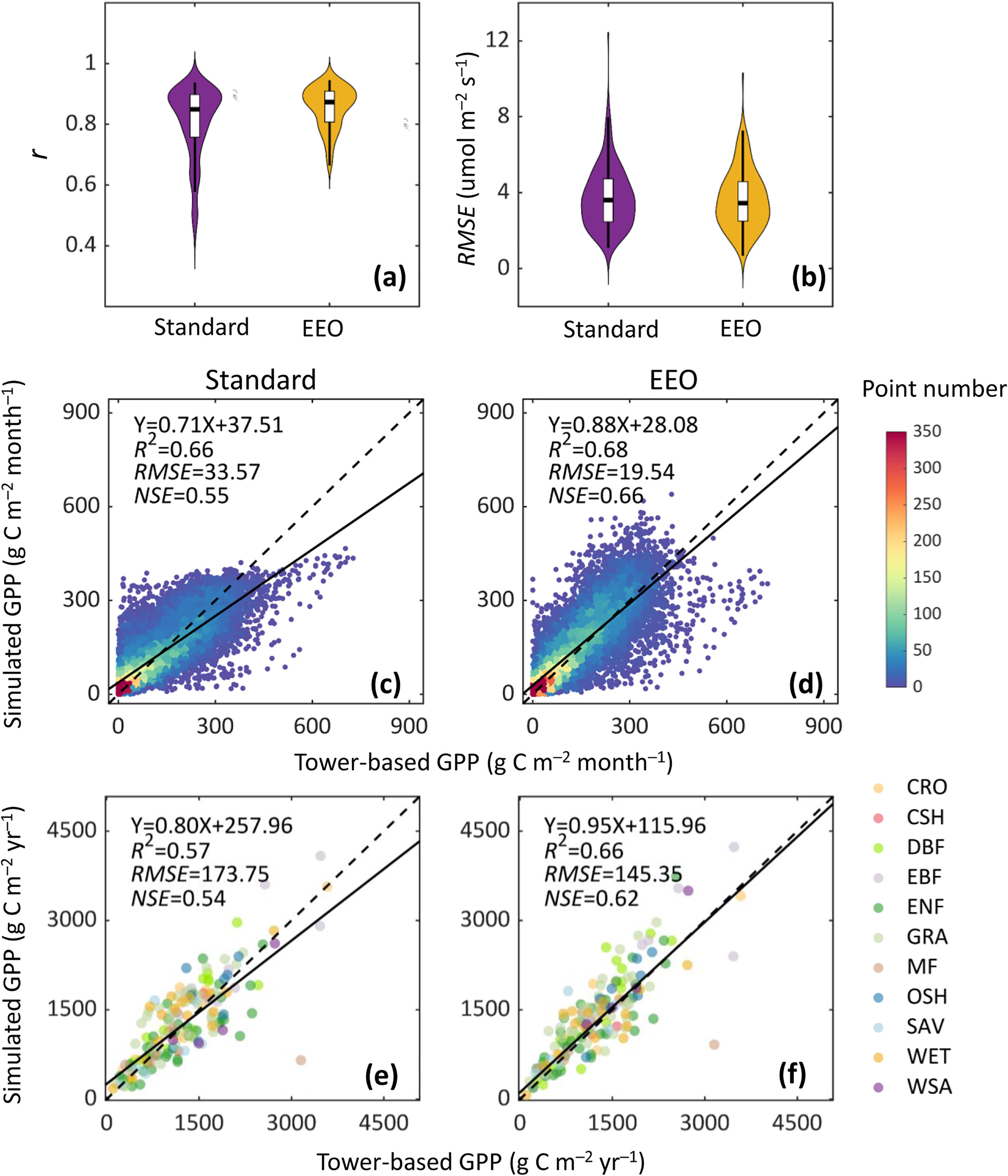SPECIAL Group PI Sandy Harrison has been involved in the publication of a key piece of research for the LEMONTREE project regarding the implementation of leaf dark respiration and photosynthesis into NOAH-MP.
The LEMONTREE project aims to enhance land surface models (LSMs) by incorporating the dynamic responses of plant processes to environmental changes using the Eco-Evolutionary Optimality (EEO) theory (you read more about the project here). A key aspect of this is therefore, implementing EEO advances into LSMs. The recent implementation of photosynthesis and leaf respiration into NOAH-MP, a land surface model, is a great step forward for the project.
The Challenge: Understanding Plant Responses to Environmental Change
The terrestrial biosphere helps mitigate climate change by absorbing about a third of human-made CO2 emissions through photosynthesis, while plant respiration releases CO2 back into the atmosphere. Traditional land surface models assume these processes remain constant, but research shows plants adjust their physiology over time, and ignoring this acclimation can lead to errors in carbon cycle predictions.
The EEO-Based Approach: A Dynamic Solution
Our newly developed EEO-based scheme addresses these gaps by incorporating the concept of acclimation into the NOAH-MP model. The EEO approach builds on the idea that plants optimise their physiological traits to balance energy and resource costs. It focuses on three key mechanisms:
- Coordination Hypothesis: Photosynthetic capacity is adjusted to balance carbon fixation and energy use.
- Least Cost Hypothesis: Plants optimise their stomatal behaviour to minimise the trade-off between water loss and carbon gain.
- Vcmax-Rcanopy Coupling: Leaf respiration is linked to photosynthetic capacity, ensuring that both processes adjust in harmony with environmental conditions.
By adding these dynamic, environmentally responsive traits into the model, we can more accurately simulate the varying impacts of temperature, radiation, soil moisture, and atmospheric CO2 on plant function.
Key Findings: A More Accurate Carbon Cycle Model
The EEO-based scheme improved simulations of key plant traits, accurately capturing seasonal and spatial variations in photosynthesis and respiration, with R25 predictions showing a strong correlation (R² = 0.65) for deciduous broadleaf forests. It also enhanced GPP estimates, reducing bias from 10.1% to 4%, and corrected significant overestimations in canopy respiration (previously up to 200%). By incorporating plant acclimation, the model provided a more balanced carbon-climate feedback, predicting a 16.5% increase in GPP with warming—far lower than the 41.2% predicted by the standard model—leading to more realistic projections of future carbon cycle dynamics. The figure below demonstrates the success of the EEO adapted model by improving model fit and reducing the root mean square error.

Figure 1: Evaluations of GPP for all FLUXNET sites at half-hourly, monthly, and annual scales. (a–b) r and RMSE of half-hourly tower-based and simulated GPP at 168 sites. The boxplot indicates the 25th percentile, 75th percentile and median among 168 sites, with maximum and minimum for the whiskers. (c–f) Scatter plots of monthly and annual GPP. The dashed and solid lines indicate the 1:1 ratio line and fitted line, respectively. NSE is the Nash-Sutcliffe efficiency coefficient. (Figure taken from Ren et al. 2025, Figure 7).
Conclusions
One of the most exciting aspects of the EEO-based scheme is its simplicity. Unlike the standard Noah MP model, which requires numerous tuneable parameters for each plant functional type (PFT), the EEO-based scheme only needs three parameters to model acclimation globally. This study marks a significant step forward in improving the accuracy and reliability of land surface models. Within the LEMONTREE project, we are continuing to work on implementing EEO theory in an even more diverse range of LSMs so stay tuned for the exiting updates as they develop!
We can read the full paper here for more details on the methods and results:
Ren, Y., Wang, H., Harrison, S.P., Prentice, I.C., Mengoli, G., Zhao, L., Reich, P.B., Yang, K. 2025. Incorporating the acclimation of photosynthesis and leaf respiration in the Noah-MP land surface model: model development and evaluation. Journal of Advances in Modelling Earth Systems. https://doi.org/10.1029/2024MS004599
Alternatively, read the full blog post on the LEMONTREE website for more details on the findings and theory behind the paper.
This blog post was adapted from the full post on the LEMONTREE website written by Natalie Sanders.
